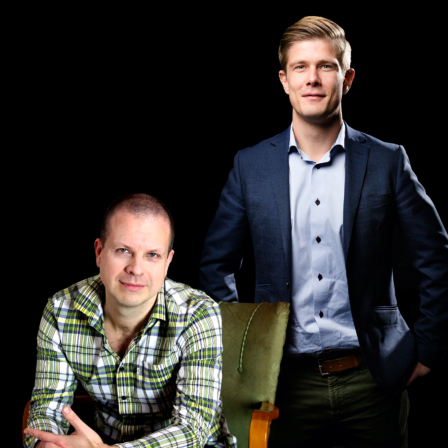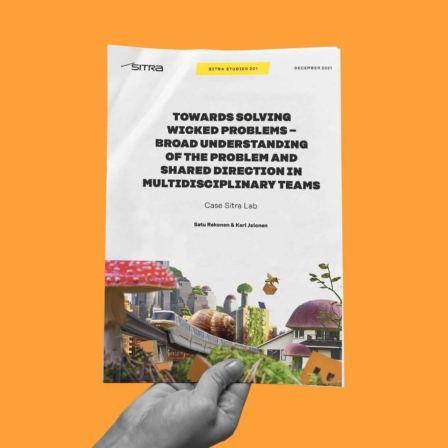Systems thinking is a paradigm, which is to say that it is the underlying assumptions and thought processes that shape our world view. We can see how system thinking is quite general and before we can do anything practical we are going to have to bring it down to earth somewhat. Complexity theory is more of a science which provides a number of concrete and specific models to help with this.
All of the large-scale systems we are interested in when talking about wicked problems are complex adaptive systems; food systems, energy systems, political systems, health systems, financial systems, etc. A complex system is typically a large-scale system composed of many interdependent diverse parts that are dynamically changing.
Wicked problems are complex which means we can not just go and tackle them in the traditional linear fashion, but instead we have to look at the structure of the system around the issue which is creating the underlying dynamics that result in that emergence outcome.
There are several different insights and models from complexity theory that can help with this, top of the list is the notion of emergence.
Emergence
Wicked problems are systemic and emergent, in that it is the very way that the parts interact locally that creates the emergent outcome of the problem. The patterns that characterize them form through self-organization within an almost infinite number of individual interactions.
An overall structure emerges that incentivizes individuals to act in a particular way due to local incentives that perpetually create the same emergent overall behavior. Because the overall pattern emerges through endless interactions across dense networks, their many cause-effect relations can never be fully mapped out in real-time.
As an example, we can think of the issue of bribery within a society. If individuals across a network exchange bribes and corruption takes hold as a systemic pattern, it will create the incentives for even more individuals to adopt similar behaviors, while limiting those who might still wish to not engage. As more individuals accept this corruption as part of normal behavior, it will gain traction. This pattern is not a fixed structure with a single identifiable cause, it is rather a dynamic outcome of a multiplicity of distributed interactions. The pattern is continuously created daily through a network of interactions.
Self-organization
This continuous creation is what we call self-organization. Self-organization is another area of complexity theory that deals with how global coordination within a system can result out of the local interactions between member parts. The theory of self-organization has grown out of many different areas from computer science to ecology and economics. Out of these areas has emerged a core set of concepts that are designed to apply to all self-organizing systems, from galaxies to living cells, to schools of fish.
Centralized command and control forms of organization are limited in capacity when dealing with complex problems, what is needed are more open collaborative forms that engender various aspects of self-organization between a diversity of members. Here again, complexity theory provides a concrete set of models to understand the dynamics of self-organization that have huge relevance when trying to coordinate a dispersed set of members within a network.
Game Theory
It is now widely recognized that many of these wicked problems take the form of a tragedy of the commons game dynamic.
Climate change, overfishing, plastic pollution, traffic congestion, lack of international political cooperation, conflicts over scarce resources and other similar issues can all be understood as tragedies of the commons. We often hear the call for more collaboration around these issues but rarely actually see forms that work. This is to a large extent due to the fact that we do not understand the real structure of incentives towards cooperation or competition in the system. It is here that game theory – another area of complexity theory – can be of great help as it offers many models and decades of research into the dynamics of cooperation and competition.
Network Thinking
All complex systems are highly interconnected and this gives them a networked architecture, the structure of this network of connections comes to be more important to the system state and behavior than any individual component. Here network theory provides models to start to reason about the structure of these networks.
Complex systems are multidimensional and multi-layered and multi-scaled. You have to look at them from many dimensions and develop a solution on the different levels and across the different dimensions; solving for one dimension or one problem will not be sufficed. This is why we talk about systems innovation and system change because with a complex problem you actually have to change the whole system by affecting multiple different areas within the network.
This is the idea of multi-solving, which says maybe all these issues aren’t separate where we have to pit them against each other and see the issues as separate – creating a new working group to go and tackle each one – we can instead step back and look at the whole system, how the parts are interrelated and a change in one will affect another domain; looking for synergistic solutions that will solve for many factors at once.
Take for example the water-food-energy nexus. This nexus perspective increases the understanding of the interdependencies across the water, energy and food sectors and looks at how they may affect climate change and biodiversity. A nexus-based approach tries to reduce trade-offs and build synergies across sectors recognizing that it may not be possible to solve a problem within one domain without solving an interrelated one in another domain. Thus it aims to increase opportunities for mutually beneficial responses and enhancing the potential for cooperation between and among all sectors. As with all interdisciplinary approaches it recognizes that interdependencies lead to the need for a collaborative approach, the need to develop multi-stakeholder platforms.
The general idea is that as issues go from being relatively simple to being relatively complex they go from being closed and independent to becoming open and interdependent. As a consequence, our approach has to shift from the traditional closed organization focusing resources on a single issue to creating open platforms that work with the relations between the parts which form the whole emergent outcome; this is a systems approach.
Conclusion
These wicked problems that have arisen in the age of the Anthropocene are our own creation, whether we talk of cybercrime, financial instability or pollution these wicked problems were created by us, they are a function of our ways of thinking and organizing ourselves, this would imply that by thinking differently and organizing in new ways we have the capacity to affect and shape the outcomes towards more sustainable ends.
I believe the key to this is the combination of new ways of thinking, that hinge around systems thinking, combined with new ways of organizing through information networks. In the past decades, we have put powerful tools for computation in the hands of many and interconnected us all with telecommunications networks. I think it is this combination that offers the potential to innovate in virtually all spheres of human activity, to enable the true systems change that is required to respond efficiently to the wicked problems of the 21st century.
Sitra’s guest blogs give a voice to the players of the future in different fields. They do not (necessarily) directly link to Sitra’s work or agenda, but are the authors’ thoughts on current issues that relate to the themes Sitra is passioned about.
Further Reading
For learning about all things to do with systems thinking, complexity theory see Systems Academy.
Introduction to Complexity Theory
Video course: Complexity Theory Course Introduction
Free eBook: Systems + Complexity. An Overview.
Network Theory Introductory Course Overview
Game Theory Video Course Introduction
Want to learn more?
Join the Changemakers community on Facebook.
Order Sitra Lab’s monthly newsletter to get the latest updates on what’s happening.















Recommended
Have some more.